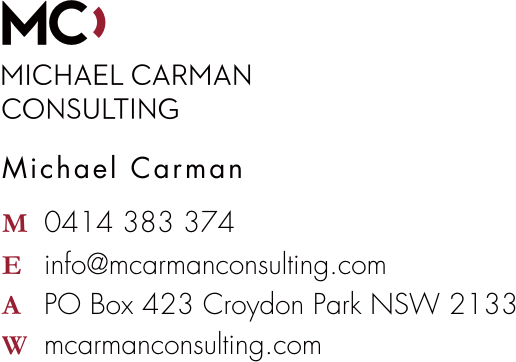Three Quick Thoughts on Coronavirus
This newsletter was supposed to be the next in the Management Ready Reckoner series, dealing with Values, Teamwork and Communication, after the first on Strategy, Structure & Resourcing. But the arrival of a global pandemic that has, at the time of writing, infected four million people, claimed the lives of over 284,000 and brought the global economy to a near standstill, has (along with a peculiarly timed run of large consulting assignments) affected your correspondent’s publishing timetable. (My apologies for the delay). And necessitated some comment on the situation in which we find ourselves.
So, here are three thoughts on our current COVID-19 situation … perhaps we’re not so far from values, teamwork and communication after all…
1. A Change Management Situation Like No Other
Conventional wisdom has it that people are reluctant to change: the typical change management literature places great emphasis on dealing with resistance to change.
Enter the coronavirus: a change like no other, the disruption par excellence. For most of us there has not been anything in living memory on the scale of what we’ve confronted over recent months: a change that has health, mortality, social and economic dimensions.
So: have we resisted dealing with this monumental and multi-faceted change?
No, we haven’t.
I’ve been struck by how people (particularly in Australia) have adapted to the COVID restrictions. Dine-in restaurants have started serving take-out. People do work-outs at home via Zoom. They’ve shared after-work drinks by FaceTime on a Friday night. Policy measures have been put in place to buffer the economic shock. Kids have had birthday parties with friends on Skype.
It’s been testing at times, and occasionally ugly. But adapted we have, and the indications at this point in Australia look favourable. Our ability to adapt is key. (It’s why our species evolved from small, nimble mammals and not large and cumbersome dinosaurs, however fearsome the latter may have been).
The consultant and writer Alan Weiss is correct when he points out that what people resist is not change, but ambiguity. Through the pandemic we have understood what we have to do (stay at home, wash our hands, practise social distancing) and why we have to do it (it is, literally a matter of life and death).
So as we emerge from our homes and the situation starts to normalise, spare a thought for the pandemic – and the responses to it here and overseas – as exercises in change management writ large. Let’s take the learnings from what’s worked and apply them to our own change efforts: people can and do change; the reason for the change must be laid out; and the measures must be specific, easily actionable and link to the reason for change. And ambiguity must be minimised.
2. Working from Home
Probably the most palpable impact of the pandemic on those who were still participating in the workforce was the sudden need for total working from home (WFH). Some managers were concerned about staff exploiting the situation, placing less emphasis on work and more on Netflix. The financial press reported instances of firms clamping down on this by utilising surveillance software to capture employees’ keystrokes, logging the websites they visit and taking a screenshot every 10 minutes or so.
While some staff might exploit circumstances to log off and kick back on the company dime, most do their work while navigating the requirements of confinement and all-day proximity to members of their household. Surely there’s a way to deal with the malingerers without resorting to means that are intrusive and oppressive for all … including the diligent?
The answer lies in monitoring outputs and deliverables (such as invoices processed, calls taken, reports or training materials produced) rather than inputs (number of keystrokes, hours worked etc.). This is a key issue to be wrestled with in any case in the knowledge economy: Peter Drucker (who died in 2005) on many occasions highlighted the importance of defining and managing the productivity of knowledge workers. But the pandemic and large-scale WFH has thrown the issue into sharp relief.
Of course, managing outputs presupposes both manager and staff member sharing a clear view on what those outputs are; the quality, number and timing of their delivery; and what interaction and communication is necessary to produce them.
Forcing clarity on those issues is no bad thing, and if done well, will facilitate greater effectiveness as we return to the (shared!) workplace. It will also facilitate greater use of remote working as needs arise in a post-pandemic environment.
3. Planning for the Return
The coronavirus has forced huge changes … and those changes encompass adapting not just to the onset of the pandemic, but also as it (hopefully) tapers off.
As the lockdown restrictions starts to ease, it makes sense to start planning for the return to normality. Decision-makers would do well to consider:
- The frequency and intensity of workplace cleaning regimes
- The return of any files, paperwork, office equipment etc. from homes to the workplace
- The time taken for supply chains and transport/logistics to fully restore, and
- Ensuring staff leave entitlements and Government subsidies (JobKeeper payments etc.) are correctly calculated.
These need to be considered for both all-at-once and staggered returns to work. Social distancing should be reflected and embedded in organisational policies and procedures. And planning should take into consideration the possibility of a partial or full recurrence of the virus and associated lockdown.
* * *
The next newsletter will likely return to the Management Ready Reckoner series and deal with values, teamwork and communication. Until then, stay safe and well.
Warm regards,
Michael

References:
Polly Mosendz and Anders Melin ‘Bosses panic-buy spy software to keep tabs on remote workers’ Australian Financial Review 30 March 2020.
Alan Weiss Process Consulting Jossey-Bass/Pfeiffer 2002, p.72.
© Michael Carman 2020
